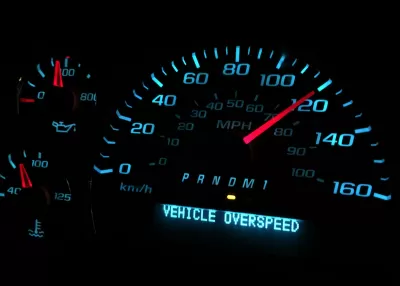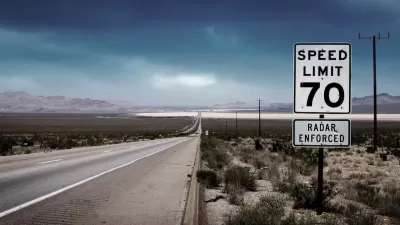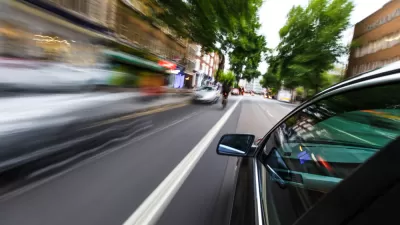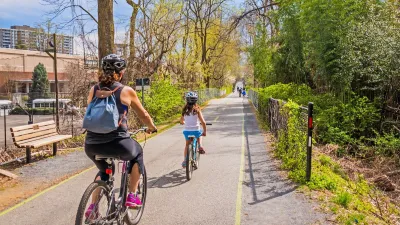Most personal vehicles can travel at speeds of over 100 miles per hour, far above any U.S. speed limit. Why?

Writing in Fast Company, David Zipper presents an argument for mandating speed-limiting technology on personal vehicles—an argument now being made by federal regulators.
Using an example from Las Vegas where a driver going more than three times the speed limit killed nine people, Zipper notes that an investigation summary from the National Transportation Safety Board (NTSB) of the crash “recommended that automakers install technology on all new cars that can prevent reckless speeding—and, for the first time, called on the National Highway Traffic Safety Administration to mandate it.”
For Zipper, “That is an excellent, overdue idea.” Speed governors are already mandated on much less deadly vehicles like e-scooters (and some company vehicles), and many modern cars do have speed limiters that cap speeds at 155 miles per hour. Why not set them at a more reasonable, less deadly limit?
The NTSB recommends that the National Highway Traffic Safety Administration (NHTSA) require the adoption of Intelligent Speed Assist (ISA) technology. As Zipper explains, “‘Passive’ ISAs issue audible or haptic alerts to drivers who exceed the top programmed speed, hopefully compelling them to slow down. ‘Active’ ISAs intervene in the car’s mechanics, often by requiring the driver to apply extra force on the accelerator.” The technology will be mandated on cars in Europe starting next year.
FULL STORY: You shouldn’t be driving over 100 mph—and your car shouldn’t let you

Study: Maui’s Plan to Convert Vacation Rentals to Long-Term Housing Could Cause Nearly $1 Billion Economic Loss
The plan would reduce visitor accommodation by 25,% resulting in 1,900 jobs lost.

North Texas Transit Leaders Tout Benefits of TOD for Growing Region
At a summit focused on transit-oriented development, policymakers discussed how North Texas’ expanded light rail system can serve as a tool for economic growth.

Why Should We Subsidize Public Transportation?
Many public transit agencies face financial stress due to rising costs, declining fare revenue, and declining subsidies. Transit advocates must provide a strong business case for increasing public transit funding.

How to Make US Trains Faster
Changes to boarding platforms and a switch to electric trains could improve U.S. passenger rail service without the added cost of high-speed rail.

Columbia’s Revitalized ‘Loop’ Is a Hub for Local Entrepreneurs
A focus on small businesses is helping a commercial corridor in Columbia, Missouri thrive.

Invasive Insect Threatens Minnesota’s Ash Forests
The Emerald Ash Borer is a rapidly spreading invasive pest threatening Minnesota’s ash trees, and homeowners are encouraged to plant diverse replacement species, avoid moving ash firewood, and monitor for signs of infestation.
Urban Design for Planners 1: Software Tools
This six-course series explores essential urban design concepts using open source software and equips planners with the tools they need to participate fully in the urban design process.
Planning for Universal Design
Learn the tools for implementing Universal Design in planning regulations.
City of Santa Clarita
Ascent Environmental
Institute for Housing and Urban Development Studies (IHS)
City of Grandview
Harvard GSD Executive Education
Toledo-Lucas County Plan Commissions
Salt Lake City
NYU Wagner Graduate School of Public Service





























